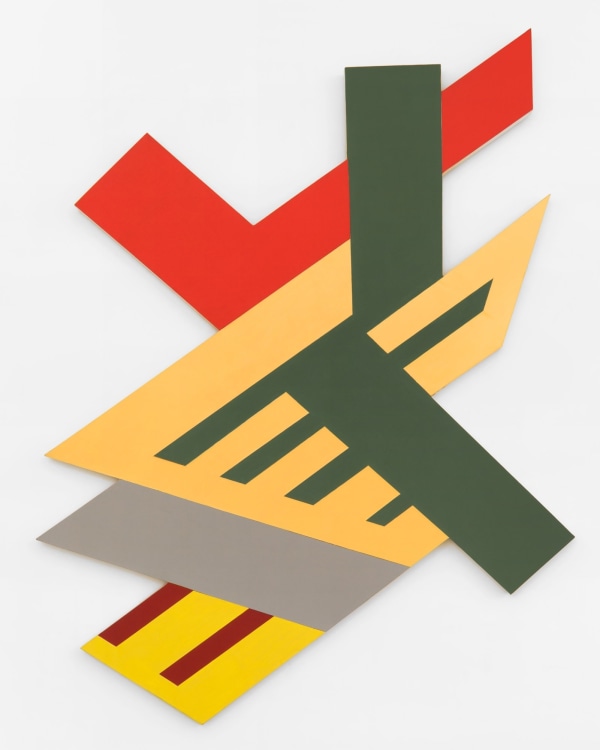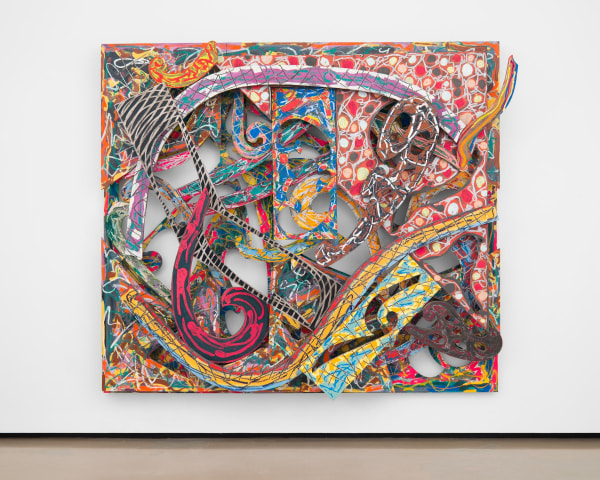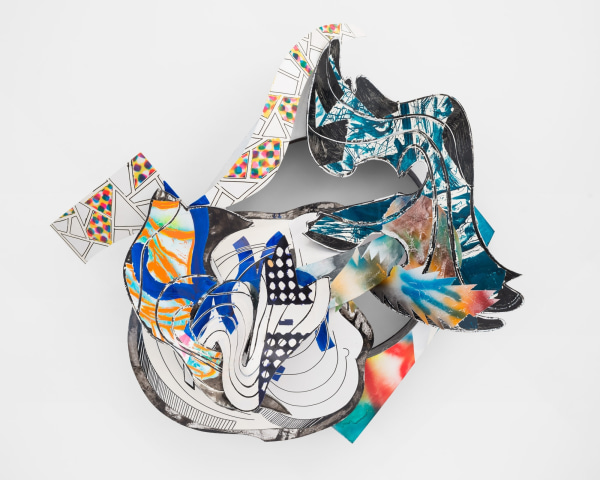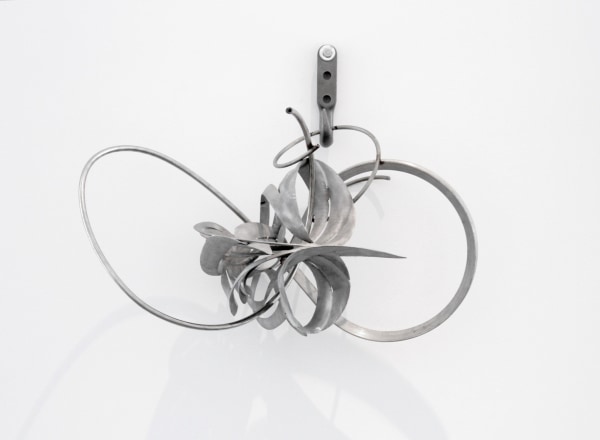Frank Stella: Shape as Form
-
-
Paul Kasmin Gallery is pleased to announce Frank Stella: Shape as Form, a solo exhibition of career-spanning works by the artist, on view at 293 10th Avenue from September 10 – October 10, 2015. The exhibition articulates Stella’s groundbreaking fusion between painting and sculpture, illustrated by one major work from nine of the artist’s most important series.
-
The title of the exhibition is taken from Michael Fried’s essay published in ARTFORUM in November of 1966, which recognized the historic step Stella took with his Irregular Polygon paintings and “the very closeness of their relation to advanced sculpture.” Beginning with the Protractor series of the 1960s through the Bali series of the early 2000s, Stella’s course between two and three dimensions has had a profound impact on generations of artists.
The exhibition begins chronologically with Sinjerli III, 1967, a Protractor painting employing the compositional element “fans”, which was one of three devices developed at this time (along with “interlaces” and "rainbows”). Though strictly two-dimensional in structure, Sinjerli can be visually interpreted as being either recessive or protruding, optically challenging the limitations of the flat surface. The same is true in Flin Flon, 1970, from the series of the same name, in which Stella uses a layered series of “interlaces” to create architectural reference points and illusionistic depth. These works are evident of Stella’s systematic approach to creating variations of paintings according to pre-determined criteria, which grew in complexity with every passing series.
One of the exhibition highlights, Felsztyn II (1971), from Stella’s Polish Village series, marks a departure from the rational geometric paintings of the Sixties and the two-dimensional picture plane to constructed pictorial reliefs that extend off the wall. At this crucial juncture the compositional layering transitions from the visual realm to the physical. This evolution into the third dimension would progress rapidly through the 1970s and 1980s in the form of the series Exotic Birds, represented in the exhibition by Eskimo Curlew, 1977, and the Circuits, seen here in Mosport 4.75X, 1982.
From 1984-1987, Stella’s hybridization of painting and sculpture would reach a dramatic crescendo in the Cones and Pillars series. Included in this exhibition is La Scienza della Fiacca 3.5X, 1984, a masterwork that was illustrated in the monograph from the artist’s 1987 mid-career retrospective at The Museum of Modern Art, NY and last exhibited at the Staatsgalerie Stuttgart in 1989. In the Cones and Pillars, the fundamental physical constructs of what traditionally constituted a painting had been expanded, effectively broadening the definition of the medium.
Frank Stella was born in 1936 in Malden, Massachusetts. Recent solo museum exhibitions have been mounted at the Museum für Gegenwartskunst, Basel, Switzerland (2015); The Phillips Collection, Washington, DC (2011); The Toledo Museum of Art, OH (2011); The Metropolitan Museum of Art, New York, NY (2007); and the Menil Collection, Houston, TX (2006), amongst many others. Frank Stella: Shape and Form precedes the artist’s major retrospective at the Whitney Museum of Art, October 30, 2015 – February 7, 2016, the most comprehensive presentation to date.
-
Works
-
Join our Newsletter
* denotes required fields
We will process the personal data you have supplied in accordance with our privacy policy (available on request). You can unsubscribe or change your preferences at any time by clicking the link in our emails.
-
Explore
-
Explore
- Diana Al-Hadid
- Alma Allen
- Theodora Allen
- Sara Anstis
- Ali Banisadr
- Tina Barney
- Judith Bernstein
- JB Blunk
- Mattia Bonetti
- William N. Copley
- Cynthia Daignault
- Ian Davenport
- Max Ernst
- Liam Everett
- Leonor Fini
- Barry Flanagan
- Walton Ford
- Jane Freilicher
- vanessa german
- Daniel Gordon
- Alexander Harrison
- Elliott Hundley
- Robert Indiana
- Lee Krasner
- Les Lalanne
- Matvey Levenstein
- Lyn Liu
- Robert Motherwell
- Jamie Nares
- Nengi Omuku
- Robert Polidori
- Jackson Pollock
- Elliott Puckette
- Alexis Ralaivao
- George Rickey
- James Rosenquist
- Mark Ryden
- Jan-Ole Schiemann
- Joel Shapiro
- Bosco Sodi
- Dorothea Tanning
- Naama Tsabar
- Bernar Venet














